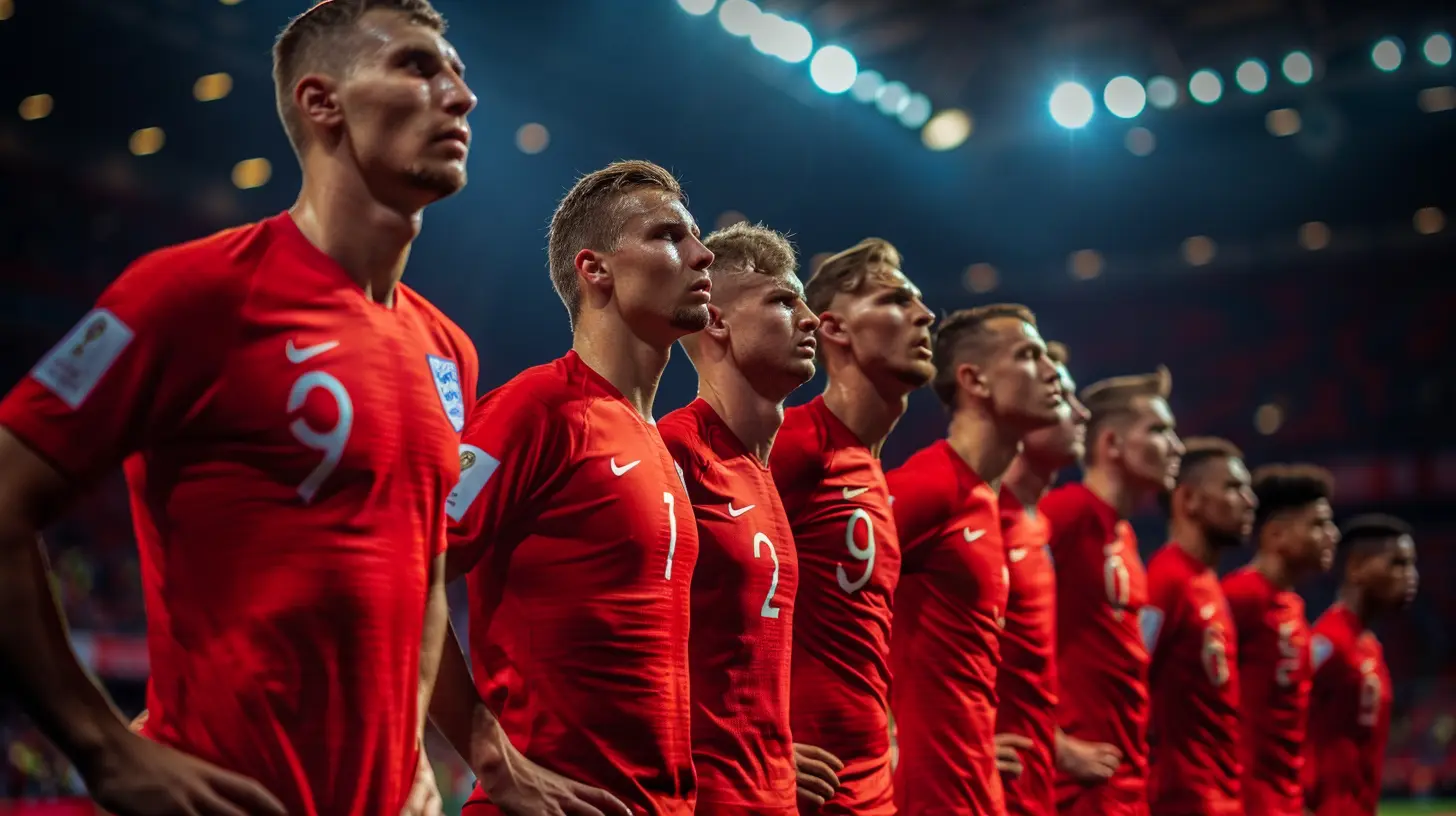8 April 2025
Imagine this: you're a national team coach, and you've got the weight of an entire country on your shoulders. The fans are buzzing with excitement, expecting victory. However, here's the catch — you barely have enough time to get your squad together, let alone mold them into a well-oiled machine. Sounds like a nightmare, doesn't it?
Building a cohesive national team in a limited time frame is like trying to perfect a symphony with musicians you've just met. It's not impossible, but it’s definitely one of the toughest gigs in sports. Let’s dive into the complexities, the challenges, and why it’s such a tricky task.

Expectation vs. Reality
When it comes to national teams, expectations are sky-high. Whether it's the World Cup, the Olympics, or any other international competition, the entire nation is watching. Fans expect magic, silky plays, and victories. But the reality behind the scenes? It’s a chaotic race against time.Limited Training Time
Unlike club teams that train together week in and week out, national teams have very little time to prepare. Most players spend the majority of their time competing with their respective clubs in different countries, across different leagues. The national team coach is lucky if they can get everyone together for a couple of weeks before a major tournament.Think about it: you’re a chef, and you’ve been given ingredients from several different cuisines. You’ve got to create a five-star dish in record time, with little to no practice. That's the dilemma national team coaches face.
Juggling Different Styles of Play
Each player comes from a different club system, which means their playing styles can vary drastically. Some players are used to a high-pressing game, while others are more comfortable with a possession-based system. The challenge is to create a unified style of play that suits the strengths of every individual player.It’s like asking a group of musicians trained in different genres — classical, jazz, rock — to come together and perform a flawless concert. They might be world-class musicians, but their styles don’t always mesh right away.
Developing Chemistry on the Fly
One of the biggest challenges is developing that intangible element of chemistry. Club teams have the luxury of time to build relationships between players. They train together daily, eat meals together, and often live in the same city. National teams? Not so much.Some of these players have never met before, and now they’re expected to play like they’ve been teammates for years. You can have the most talented squad, but without chemistry, it can feel like everyone’s playing in their own bubble.
And here's the kicker: chemistry can't be forced. It's built through experiences, trust, and time—things that national teams simply don’t have in abundance.

The Pressure Cooker of Expectations
Pressure is a double-edged sword. On one side, it can drive players to perform at their highest level. On the flip side, it can also paralyze them. National teams are under immense pressure to succeed, especially in countries where football (or any other sport) is synonymous with national identity.Unrealistic Expectations
Fans and media often don’t take into account the limited time coaches and players have to prepare. Instead, they demand results. No one cares if the full-back hasn’t played with the center-back before. The only thing that matters is the scoreboard.This creates a pressure cooker environment, where every mistake is magnified, and every loss feels like a national disaster.
Short-Term Focus
National team coaches rarely have the luxury of long-term planning. While club coaches can build a squad over several seasons, national team coaches are often judged on one or two tournaments. This short-term focus means they have to make immediate decisions, often without enough time to fully evaluate players or strategies.The pressure to perform in the short-term can lead to hasty decisions, which in turn can disrupt the process of building cohesion. It’s a vicious cycle, and breaking out of it is no easy task.

Player Fatigue and Injuries
Another major hurdle? Player fatigue and injuries. National team players are often coming off long, grueling seasons with their clubs. By the time they join the national team, they’re running on fumes.Physical and Mental Burnout
It’s not just the physical fatigue; it’s the mental exhaustion too. Players are constantly expected to perform at their peak, both for their clubs and their country. When you're dealing with players who are physically drained and mentally burnt out, it’s tough to build a cohesive unit.Injury Nightmares
Let’s not forget the injury bug. National team coaches often have to deal with last-minute injuries, forcing them to reshuffle their squad at the eleventh hour. It's like trying to complete a puzzle, only to find that a crucial piece is missing.Player injuries can completely derail a coach’s plans, especially when they involve key players. And when you’ve already got limited time, losing a key player can feel like the final nail in the coffin.

The Importance of Leadership
In these high-pressure, limited-time situations, leadership becomes critical. A strong leader on the pitch can make all the difference in building team cohesion.The Role of the Captain
A national team captain isn’t just a figurehead. They’re the glue that holds the team together. A good captain can rally the team, build relationships, and set the tone for how the team operates on and off the field.Think of them as the conductor of the orchestra. They might not play every instrument, but they ensure everyone is in sync.
Experienced Players
Veteran players also play a crucial role in fostering a sense of unity. They’ve been there before; they understand the pressure and the importance of coming together as a team. Their experience can be invaluable in helping younger or less experienced players settle in quickly.Time Management is Key
With limited time, coaches need to be masters of time management. Every minute counts. Training sessions are often packed with tactical drills, set-piece rehearsals, and team-building exercises. It’s a balancing act between preparing the team tactically and ensuring they bond on a personal level.Prioritizing the Essentials
Coaches need to prioritize what’s most important. They can’t cover everything in the short time they have, so they focus on the essentials — developing a clear tactical plan, identifying key partnerships on the field, and ensuring that everyone understands their role.It’s all about maximizing the little time they have. And while that’s easier said than done, the best coaches are those who can make the most of every second.
The Role of Tactics and Strategy
Tactics play a crucial role in building a cohesive team. But they’re only effective if the players understand them and can execute them under pressure. With limited time, coaches have to simplify their strategies. They can’t afford to overcomplicate things.Simplicity Wins the Day
A national team coach doesn’t have the luxury of months to drill a complex tactical system into their players. Instead, they often opt for simple, straightforward tactics that allow the players to focus on their strengths rather than overthinking every move.But here’s the thing — simplicity doesn’t mean a lack of sophistication. It’s about finding a balance between tactical clarity and flexibility. A clear, concise game plan can create a sense of unity, even when the players have little time together.
The Emotional Roller Coaster
Finally, building a cohesive national team comes with its share of emotional ups and downs. Representing your country is a massive honor, but it also comes with a lot of emotional baggage. Players are not only playing for themselves but for millions of fans back home.Emotional Bonds
Despite the limited time, the emotional bond that forms in national teams can be incredibly strong. Players are united by a common goal — to win for their country. And sometimes, that sense of national pride can be the glue that holds the team together, even when everything else is working against them.The Joy of Success
When a national team does succeed, the joy is unparalleled. It’s not just about winning a trophy; it’s about bringing joy to an entire nation. And that, more than anything, is why players and coaches push through all the challenges.Conclusion
Building a cohesive national team with limited time is no easy task. It requires a lot of hard work, quick thinking, and, most importantly, the ability to adapt. From dealing with different playing styles to managing high expectations, the challenges are numerous. But when it all comes together, the result can be magical.As fans, we often overlook the complexities behind the scenes. We expect instant success without realizing the obstacles coaches and players face. So, the next time you watch your national team take the field, remember the herculean effort it took to get there.






Kingston McManus
Great insights! Building team cohesion in limited time is indeed challenging. It underscores the importance of effective communication and trust among players and coaches.
April 20, 2025 at 6:25 PM